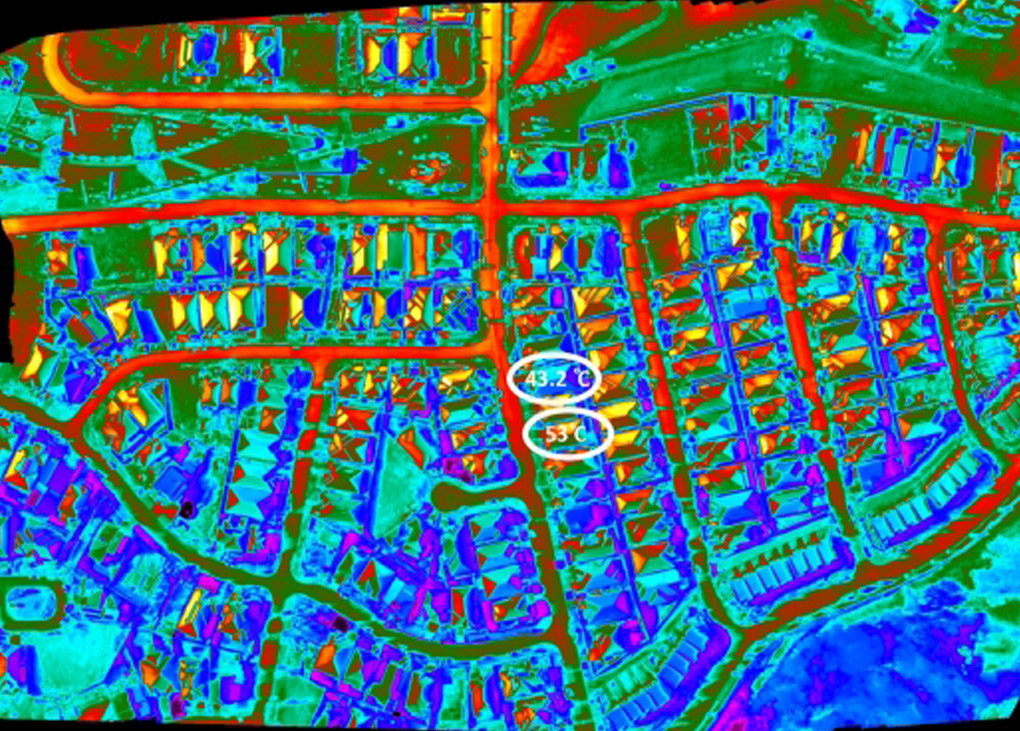New research has confirmed the potential benefits of reflective material on buildings – and raised more questions about the NSW government’s change of heart on banning dark roofs.
After conducting a technological and cost-benefit analysis across major Australian cities, the University of New South Wales (UNSW) Sydney team found that city-wide implementation of cool roofs would reduce energy bills, lower indoor temperatures, decrease urban heating and improve the health of vulnerable populations.
The analysis was undertaken by the High Performance Architecture team at the School of Built Environment at UNSW Arts, Design & Architecture. It was part of a project funded by the federal Department of Industry, Science, Energy and Resources (DISER) aimed at understanding the applicability and cost-benefit of using cool roof technology on buildings in Australia and any barriers to adoption.
“We used simulated climatic modelling to understand conditions with and without cool roofs,” says Scientia Professor Mat Santamouris, who has also been involved in the development of materials to help buildings stay cool. “The results showed urban areas, including Western Sydney, Perth, Melbourne, Adelaide, Darwin and Brisbane, had the most to gain from cool roofs.”
The analysis looked at 17 types of buildings, ranging from low to high rise, commercial to residential and stand-alone to apartment blocks. Researchers found that existing buildings with low insulation levels have the most to gain in energy savings by implementing cool roofs. Newer buildings with higher levels of insulation have relatively less scope for energy savings compared to less insulated buildings – but there are savings nonetheless.
According to the results, indoor temperatures in residential houses would be reduced by up to 4°C with a cool roof, with the number of hours exceeding 26°C reduced by 100 hours per summer compared to conventional roofs. If the whole of Sydney implemented cool roofs, energy consumption for cooling residential and commercial buildings would decrease by up to 40 per cent in total.
“During summer, a building in Western Sydney will require double the energy to cool down compared to the same building in eastern Sydney,” says Prof. Santamouris.
“Western Sydney is especially at risk of urban overheating, meaning the low-income households are more likely to either spend more on cooling or are forced to endure heat-related stress indoors. It’s a very serious problem.”
The research also looked at the effect of cool roofs on the temperatures in cities. It found that implementing cool roof technology and pavements will reduce temperatures in entire cities by up to 2°C over the summer period. City-scale use of cool roofs would reduce the maximum peak outdoor air temperature by an average of 1.5–2°C during summer.
Despite these benefits – and the presence of a significant cool roof industry – there has not been widespread uptake of this technology in Australia. The research team identified some of the barriers as a lack of legislation, policy support, accreditation standards and awareness.
“If the barriers were addressed and cool roof technology widely implemented, then approximately 150,000 new jobs would be generated in Australia,” says Prof. Santamouris.
“The infrastructure is already here. Australia has 10 different companies producing cool materials and exporting them all over the world.
“The need for cool roofs and other heat mitigation technologies should really be a priority. If not, the cost of climatic change in the next 10 to 15 years will be tremendous.”
To read more about the research, click here.
Image courtesy of UNSW Sydney Newsroom.
 Mark Vender
Mark Vender


Leave a Reply